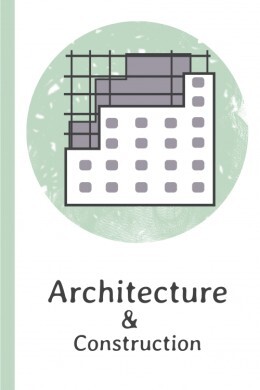Arhitectură și Construcții - Arhitectura asiatică și egipteană
Aici vei învăța câteva cuvinte în engleză legate de arhitectura asiatică și egipteană, cum ar fi "casă de ceai", "hanok" și "pilon".
Revizuire
Fișe de studiu
Ortografie
Chestionar

a traditional style of Japanese tea houses and residential architecture associated with the tea ceremony, known for its simplicity, natural materials, and integration with the surrounding garden

sukiya-zukuri, stilul sukiya
a traditional Japanese architectural style characterized by the use of wooden screens, tatami mats, and decorative alcoves

shoin-zukuri, un stil arhitectural tradițional japonez caracterizat prin utilizarea ecranelor din lemn
a style of aristocratic residential architecture characterized by a large main hall surrounded by smaller buildings, often seen in palaces and noble estates during the Heian period

shinden-zukuri, stilul shinden-zukuri
a style primarily used for Shinto shrines dedicated to Hachiman, characterized by a symmetrical gabled roof with two entranceways and verandas

hachiman-zukuri, stilul hachiman-zukuri
a style used for shrines associated with mountain worship, featuring a distinctive blend of Buddhist and Shinto architectural elements

gongen-zukuri, stilul gongen-zukuri
a style of shrine architecture characterized by a curved, thatched roof, often resembling the shape of a wave, commonly seen in shrine halls

nagare-zukuri, un stil de arhitectură a sanctuarului caracterizat printr-un acoperiș curbat din paie
a Japanese architectural style featuring layered roofs and symmetrical layouts seen in imperial and aristocratic buildings

Stilul Teikan, Stilul arhitectural Teikan
a traditional wooden townhouse found in Kyoto, Japan, known for its narrow frontage and deep interior design

machiya, casă tradițională din lemn din Kyoto
a traditional Japanese gate commonly found at the entrance of Shinto shrines, characterized by two vertical pillars and a horizontal lintel, often painted in red and symbolizing the transition from the secular to the sacred

torii, poartă tradițională japoneză
a religious structure in Japan dedicated to the worship of kami, the spirits or deities of nature and ancestors, often characterized by a distinctive architectural style, torii gates, and various ritual elements

sanctuar șintoist, templu șintoist
a meditation hall or space, typically associated with Zen Buddhism, where practitioners gather for silent seated meditation and other related practices

un zendo, o sală de meditație zen
a place where tea is served, often accompanied by snacks or light meals

casă de ceai, salon de ceai
a peaceful Japanese-style garden with rocks, sand or gravel, and minimal plants, created to promote tranquility, meditation, and a harmonious connection with nature

grădină zen, grădină de meditație
a traditional Japanese architectural ornamentation in the form of a demon or ogre mask, often made of clay or ceramic, placed on the edges of roofs or walls to ward off evil spirits and bring protection to the building

onigawara, masca decorativă de demon tradițională japoneză
a multi-story temple located in East or South Asia with a curved roof at each story

pagodă, templu cu mai multe niveluri
a traditional Chinese architectural element consisting of interlocking wooden brackets that support the roof and transfer the weight of the structure to the columns or walls

dougong, un element arhitectural tradițional chinezesc format din console de lemn interconectate care susțin acoperișul și transferă greutatea structurii pe coloane sau pereți
traditional Korean houses with distinctive architectural features, including wooden frames, paper sliding doors, and curved roofs, reflecting the cultural heritage of Korea

hanok, casă tradițională coreeană
a circular or semi-circular opening found in traditional Chinese gardens and architecture, typically made of stone or wood, creating a framed entrance or window that symbolizes harmony and good fortune

poarta lunii, portal în formă de lună
a type of ancient Egyptian tomb structure characterized by a rectangular, flat-roofed design with sloping sides, typically consisting of an underground burial chamber and a superstructure above ground

mastaba, mormânt mastaba
a small structure or room within an ancient Egyptian temple or tomb complex where offerings, rituals, and prayers were conducted to honor and provide for the deceased or deities

capelă de ofrandă, oratoriu de ofrandă
an underground structure or chamber, often used as a tomb or sacred space, typically found in ancient civilizations such as Egypt and Rome, and characterized by its subterranean location and architectural features

hipogeu, structură subterană
a type of ancient Egyptian temple built near or connected to a royal tomb, dedicated to the worship and commemoration of a deceased pharaoh, serving as a place for rituals, offerings, and the veneration of the ruler's spirit

templu funerar, templu mortuar
a monumental gateway of an ancient Egyptian temple formed by two tapered towers flanking a central entrance, symbolizing the horizon

un pylon, un pylon egiptean
a large hall with a roof supported by many columns

hipostil, sală hipostilă
a stone monument built in ancient Egypt usually as a tomb for the pharaohs, which has a triangular or square base that slopes up to the top

piramidă, monument piramidal
a small, enclosed chamber or room, typically found in ancient Egyptian tombs, where the statue or representation of the deceased person was placed for worship or remembrance

serdab, cameră funerară
an architectural element in ancient Egyptian tomb and temple architecture that resembles a real door but is not functional

ușă falsă, ușă simulată


